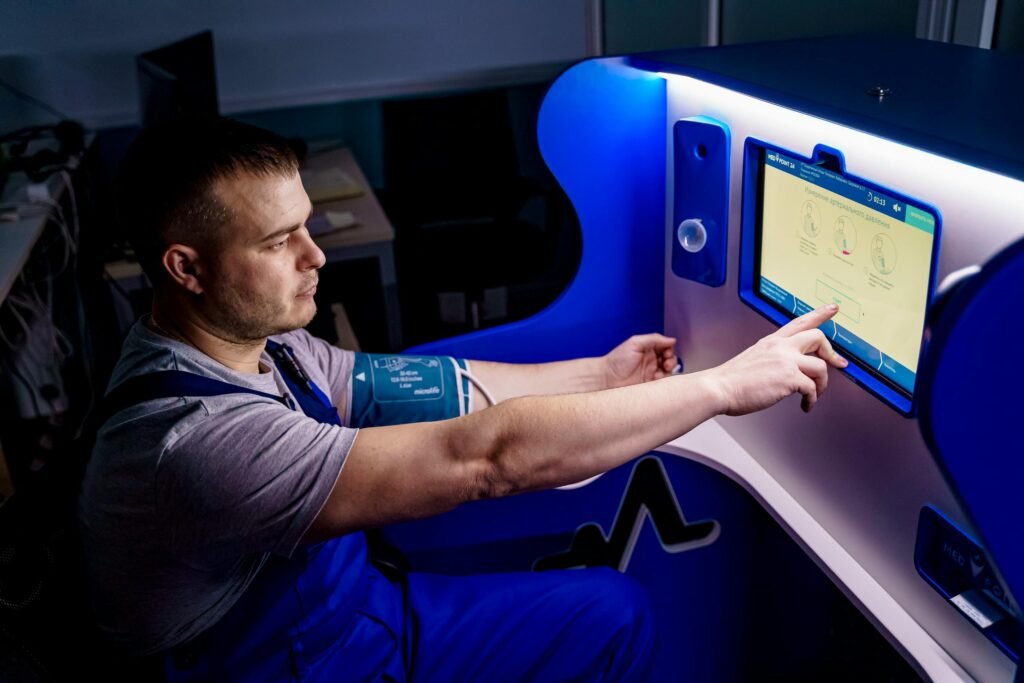Practical, evidence-informed guide for athletes: how to build a resilient gut microbiome, use probiotics and diet to boost performance, and recognise and manage leaky gut risk.

Why Gut Health Matters for Athletes
Your gut is not just about digestion — it’s a metabolic and immune organ that affects recovery, energy, inflammation, and even mood. For athletes, a resilient gut microbiome helps:
- Support immune resilience — reduce illness-related training interruptions.
- Improve nutrient absorption — better uptake of protein, iron, B12 and fat-soluble vitamins.
- Reduce systemic inflammation — faster recovery and lower DOMS.
- Optimize body composition — microbiome influences energy extraction and metabolic signaling.
Common Gut Challenges Athletes Face
High training loads and certain sport-specific factors increase gut stress. Common problems include:
- Exercise-induced gastrointestinal (GI) symptoms: cramps, nausea, diarrhoea — common in endurance sports.
- Increased intestinal permeability (leaky gut): from heat, heavy endurance sessions, NSAID use, or low-energy availability.
- Dysbiosis: imbalanced microbiota from poor diet, travel, antibiotics, or repeated stress.
- Food intolerances: short-term or chronic sensitivities that impair training.
Why training can create gut problems
During heavy exercise the body prioritises blood flow to working muscles and skin (for cooling) and away from the gut. Reduced gut blood flow + mechanical jostling + heat + high sympathetic tone can damage the gut lining and allow endotoxins like LPS to pass into circulation — causing inflammation and fatigue.
Understanding Probiotics, Prebiotics & Synbiotics
These three terms are often used together. Here’s a practical cheat-sheet:
| Term | Definition | Athlete use-case |
|---|---|---|
| Probiotics | Live microorganisms (strain-specific) that confer a health benefit when taken in adequate doses. | Reduce URTI risk, improve gut symptoms in some athletes, support recovery after antibiotics. |
| Prebiotics | Non-digestible fibers that selectively feed beneficial gut bacteria (e.g., inulin, FOS, resistant starch). | Increase SCFAs like butyrate — support gut barrier and anti-inflammatory tone. |
| Synbiotics | Combination of probiotics + prebiotics designed to work together. | Often more effective for colonisation/resilience; useful during intensified training or travel. |
Top Probiotic Strains & What They Do (Athlete-focused)
Below are strains with evidence relevant to athletes. Use these as starting points when evaluating supplements.
| Strain | Evidence-based benefit | Typical dose |
|---|---|---|
| Lactobacillus rhamnosus GG (LGG) | Reduces URTI incidence & duration in some groups, supports barrier | ~1–10 billion CFU/day |
| Bifidobacterium lactis BB-12 | Immune support and gut comfort during travel/food changes | ~1–10 billion CFU/day |
| Lactobacillus plantarum | May improve IBS-like symptoms and gut barrier markers | Varies — 1–20 billion CFU/day |
| Saccharomyces boulardii | Yeast probiotic used for antibiotic-associated diarrhea and traveller’s diarrhea prevention | ~5 billion CFU/day |
Tip: athletes travelling internationally or experiencing frequent GI issues during events should consider a researched, multi-strain product (or targeted strain) started 2–4 weeks before travel/competition and continued for the event period.
Foods That Build a Performance-Ready Microbiome
Supplements help — but the foundation is food. Prioritise diversity, fibre, and fermented foods.
- High-fibre whole foods: oats, barley, legumes, apples, berries, greens — feed short-chain fatty acid (SCFA) producers.
- Resistant starch: cooled rice/potatoes, green bananas — potent prebiotic that increases butyrate.
- Fermented foods: kefir, yogurt (with live cultures), sauerkraut, kimchi — introduce live microbes and food-derived bioactives.
- Polyphenol-rich foods: berries, coffee, dark chocolate, green tea — polyphenols act as prebiotic-like compounds for beneficial taxa.
- Avoid chronic ultra-processed-food reliance: linked to lower diversity and inflammation.
Leaky Gut: What It Is, What Causes It, and How To Test
What is intestinal permeability (leaky gut)?
Intestinal permeability refers to how easily molecules pass through the gut lining. A healthy gut allows selective absorption; increased permeability allows microbial products (LPS) and large molecules into circulation, provoking immune responses.
Athlete-specific triggers
- High-intensity or prolonged endurance sessions — especially in heat
- NSAID use (common for DOMS management)
- Low-energy availability / inadequate carbohydrate around training
- Frequent antibiotics or travel
- High stress and poor sleep
How is it measured?
Clinical tests include dual-sugar permeability tests (lactulose:rhamnose), zonulin measurements, and some commercial gut-health panels. Interpreting tests should be done with a clinician — use tests to confirm and monitor, not as isolated proof.
Nutrition & Meal-Timing Strategies to Protect the Gut
1. Prioritise carbohydrate around high-intensity and long sessions
Carbohydrate ingestion during prolonged exercise preserves gut blood flow and reduces intestinal injury. Aim for sport-appropriate carb intake (30–90 g/hour depending on duration and intensity) using easily digestible sources (sports drinks, gels, bananas).
2. Avoid heavy high-fat or high-fiber meals immediately pre-event
These slow gastric emptying and can increase GI distress if eaten too close to hard sessions. Reserve higher fibre/whole-food meals for recovery windows.
3. Re-introduce fibre progressively if returning from low-fibre period
Sudden increases in fermentable fibres when an athlete resumes normal training or returns home after travel can cause bloating and gas. Ramp slowly across 2–3 weeks.
4. Hydration & electrolytes
Proper hydration and electrolyte balance support gut perfusion. During long sessions in heat, include sodium with fluids to reduce cramping and hypotension that worsen gut ischemia.
5. Post-workout recovery meals
Focus on protein (20–40 g high-quality), carbohydrates to restore glycogen, and anti-inflammatory foods (berries, oily fish). A recovery feeding within 60 minutes helps repair and lowers systemic inflammation.
Training Modifications to Minimise Gut Damage
You don’t have to stop training—use smarter programming:
- Periodise volume: schedule easier microcycles after races or competitions to allow gut recovery.
- Heat adaptation: for hot events, progressive heat exposure can reduce gut injury risk.
- Carb-feeding during sessions: as above, preserves gut perfusion.
- Avoid NSAIDs regularly: explore alternatives (cold water immersion, compression, active recovery) when possible.
Practical 4-Week Gut Resilience Plan for Athletes
Use this short programme to stabilise gut symptoms and build diversity. Adjust portions and intensity to sport and body size.
| Week | Focus | Actions |
|---|---|---|
| Week 1 | Stabilise & baseline | Reduce NSAID use, record daily GI log, start 1 serving fermented food every other day, add 1 prebiotic food per day (oats/banana). |
| Week 2 | Introduce probiotic | Begin clinically-backed probiotic (strain-specific), increase fermented foods to 3x/wk, gradually raise fibre by +5g/day. |
| Week 3 | Train the gut | Implement race-day nutrition practice sessions (carbs during long sessions), continue probiotic, target 4–6 plant foods/day. |
| Week 4 | Consolidate | Reassess symptoms, adjust probiotic dose if needed, add resistant starch 3x/wk (cooled rice/potato), plan long-term food diversity goals. |
Notes: if symptoms persist, escalate to a sports dietitian or gastroenterologist. For serious mucosal damage or chronic diarrhea, investigate malabsorption and inflammatory causes.
Supplements: What Helps and What’s Overhyped
Evidence-backed options (use reputable brands and third-party tested products):
| Supplement | Why use it | Practical dose / notes |
|---|---|---|
| Multistrain probiotic | Decrease URTI risk, reduce GI symptoms in some studies | Choose strains above; follow label (usually 5–20 billion CFU/day) |
| Saccharomyces boulardii | Acute traveler’s diarrhea and post-antibiotic support | 5 billion CFU/day; avoid in immune-compromised |
| L-Glutamine | Fuel for enterocytes — may support repair in some protocols | 5–10 g/day in short blocks; evidence mixed |
| Omega-3 (EPA/DHA) | Anti-inflammatory support and membrane health | 1–3 g combined EPA/DHA daily |
| Resistant starch / prebiotic fibre | Increase butyrate — improves barrier function | Start 5 g/day and increase to 15–30 g/day as tolerated |
Overhyped or risky: high-dose digestive enzyme blends without clear need, broad-spectrum antimicrobial cleanses, and unverified “rapid detox” products. Avoid long-term, unnecessary antibiotic or herbal antimicrobial use unless clinically indicated.
Travel & Competition: A Practical Gameplan
Travel is a major gut stressor (time zone changes, food changes, sleep disruption). Use a checklist:
- Bring a tried probiotic (start 2 weeks pre-travel if possible).
- Pack familiar, high-quality snacks (nuts, oats, bars with low-ingredient lists) to avoid poor food choices.
- Hydrate early and often — include electrolytes during long flights and before/after events in heat.
- Practice race nutrition in similar environmental conditions ahead of time, including the exact products (gels, drinks) you’ll use.
Monitoring & When to Seek Professional Help
Track symptoms and training — simple logs are powerful. Watch for:
- Frequent diarrhoea or blood in stool
- Unintended weight loss or malabsorption signs (fatty stools)
- Repeated infections or prolonged fatigue
- Symptoms that significantly impact training or daily life
If any of the above occur, consult a sports dietitian and gastroenterologist. Testing (stool microbiome panels, breath tests for SIBO, inflammatory markers) may be useful but must be interpreted in context.
Practical Meal Plan & Sample Day for Gut Health (Athlete, Moderate Volume)
This sample focuses on diversity, prebiotic/resistant starch inclusion, and timing around training.
Sample Day
- Pre-training (if morning hard session): 200–300 ml sports drink with 20–40 g carbs or a small banana + 10 g rice cake 30–60 min before
- Post-session (0–60 min): Whey or plant protein 25–35 g + 40–60 g carbs (smoothie with oats, berries, spinach)
- Lunch: Grilled salmon, quinoa (cooled then reheated for RS), steamed broccoli, sauerkraut (1–2 tbsp)
- Snack: Greek yogurt with mixed berries and 1 tbsp ground flaxseed
- Dinner: Chickpea & vegetable curry with brown rice (cooled/RS), side salad with mixed greens and olive oil
- Bedtime (if needed): 1 small portion of resistant starch (cooled potato) or a kiwi for fibre
Aim for 3–6 different plant foods per day and include at least one fermented food several times per week.
Common Questions (FAQ)
Q: Should all athletes take a probiotic?
Not necessarily — but athletes with recurrent URTIs, GI symptoms, or frequent travel often benefit. Choose evidence-based strains and consider a trial period (6–12 weeks) to assess effects.
Q: How long to see benefits from probiotics?
For immune or GI symptom changes you might see improvements in 2–8 weeks. Microbiome diversity changes can take longer and depend on diet and lifestyle.
Q: Can I combine probiotics with prebiotics?
Yes — synbiotics (combined) often help colonisation and SCFA production. Start slow with prebiotic doses to avoid gas/bloating.
Q: Are stool microbiome tests useful?
They can offer snapshots but have limitations: interpretation is evolving and clinical action should be guided by a specialist. Focus primarily on symptoms, diet, and performance metrics.
Action Plan: 10 Practical Steps You Can Start Today
- Track your GI symptoms and training for 2 weeks — identify patterns.
- Reduce routine NSAID use; try recovery alternatives.
- Add 1 fermented food this week (yogurt, kefir, kimchi).
- Introduce a multi-strain probiotic (if symptomatic or travelling) — choose a reputable brand.
- Practice race nutrition in training; avoid testing new food on race day.
- Increase plant-food diversity — aim for 3–6 different per day.
- Start small with resistant starch (cooled rice/potato) 2–3x/week.
- Hydrate strategically and include sodium in long sessions.
- Prioritise sleep & manage stress — they are as important as diet.
- If problems persist, consult a sports dietitian or gastroenterologist and consider testing.



